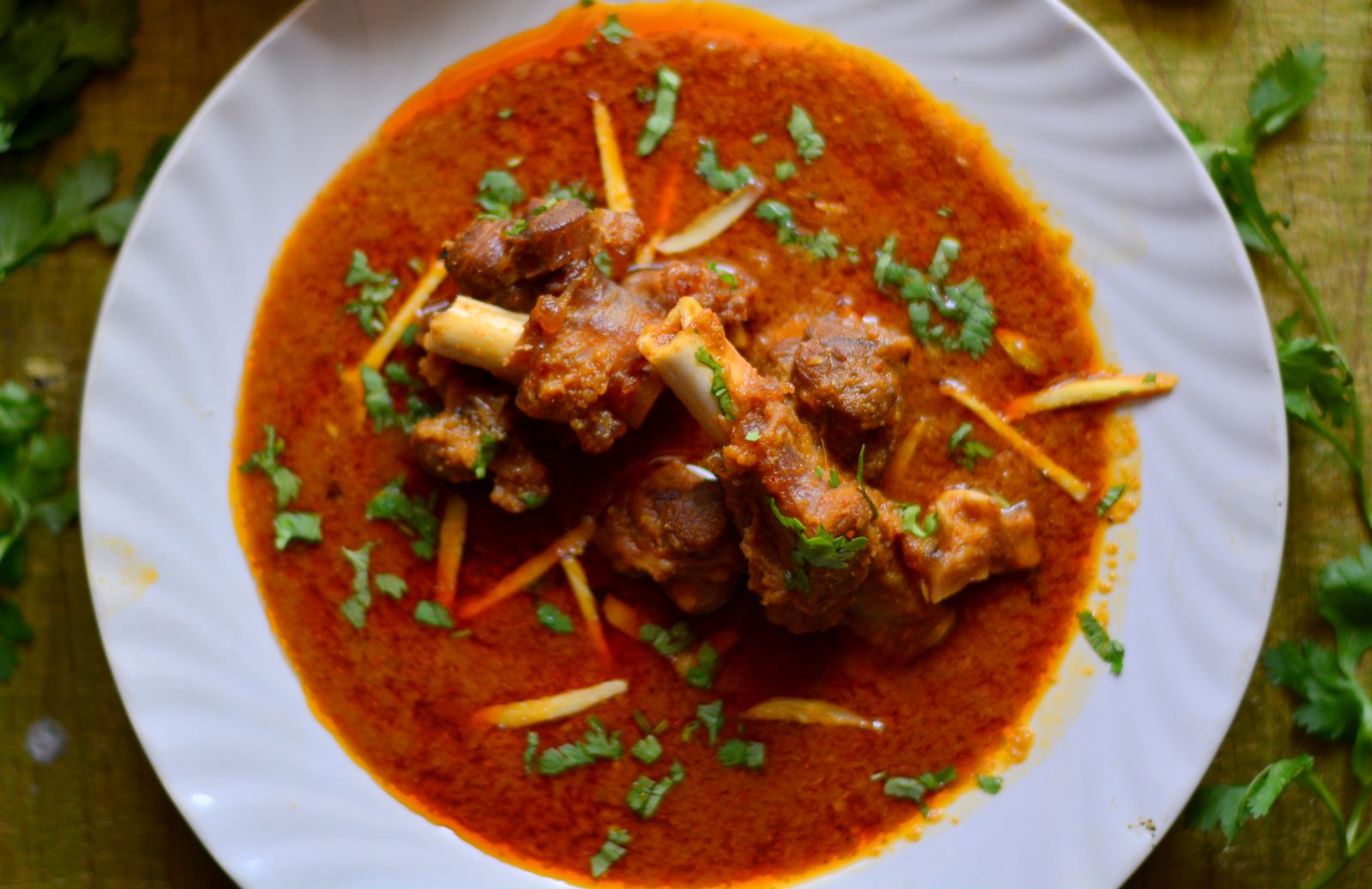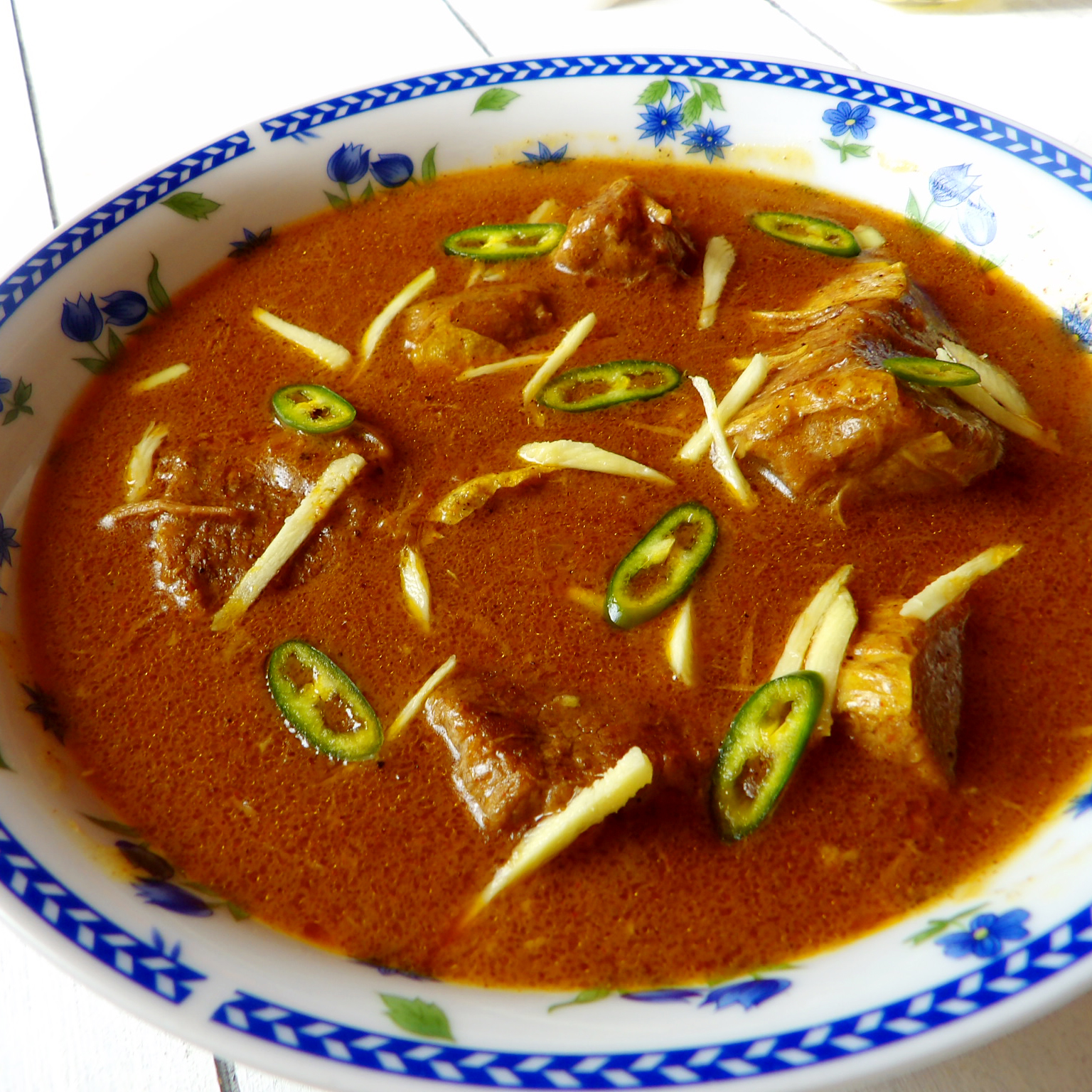Nihari, a beloved dish in Pakistani cuisine, is a rich and flavorful stew that embodies the country’s culinary heritage. Originating in the kitchens of the Mughal Empire, Nihari has become an integral part of Pakistani culture, enjoyed by people from all walks of life.
This delectable dish is characterized by its tender meat, aromatic spices, and velvety gravy. Whether it’s a festive occasion or a comforting family meal, Nihari holds a special place in the hearts of Pakistanis.
Introduction to Nihari

Nihari, a beloved Pakistani dish, traces its roots to the kitchens of the Mughal Empire. It emerged as a hearty breakfast meal for soldiers during military campaigns, providing sustenance and warmth in the early morning hours.
Cultural Significance and Popularity
Nihari has become an integral part of Pakistani cuisine, transcending regional boundaries. Its popularity stems from its rich, flavorful broth, tender meat, and aromatic spices. It is often served at special occasions, family gatherings, and religious festivals, embodying the spirit of Pakistani hospitality and culinary traditions.
Ingredients and Preparation
Nihari, a staple of Pakistani cuisine, is a rich and flavorful dish that requires careful preparation and a symphony of spices. Let’s explore the essential ingredients and the meticulous process of crafting this culinary masterpiece.
The foundation of Nihari lies in its selection of prime ingredients, each contributing its unique character to the dish.
Key Ingredients
- Beef Shank: The primary meat used in Nihari, beef shank is a flavorful cut with a high collagen content, which breaks down during cooking, resulting in a tender and succulent texture.
- Onions: A generous amount of thinly sliced onions forms the aromatic base of Nihari, providing sweetness and depth of flavor.
- Ginger-Garlic Paste: A potent combination that adds warmth and pungency to the dish, ginger-garlic paste is an indispensable ingredient.
- Spices: Nihari is renowned for its complex blend of spices, including cumin, coriander, turmeric, red chili powder, garam masala, and black pepper. These spices impart a vibrant and aromatic character to the dish.
- Yogurt: Yogurt serves as a tenderizer for the beef and adds a subtle tanginess to the Nihari.
- Wheat Flour: A small amount of wheat flour is used to thicken the gravy, creating a rich and velvety texture.
- Ghee: Clarified butter, or ghee, adds richness and a nutty flavor to the dish.
Cooking Process
The preparation of Nihari is a labor of love, requiring patience and meticulous attention to detail.
- Marinating: The beef shank is marinated in a mixture of yogurt, spices, and ginger-garlic paste for several hours, allowing the flavors to penetrate the meat.
- Sautéing: The marinated beef is browned in a large pot with ghee. This step develops a rich and flavorful crust on the meat.
- Onion Base: A large quantity of thinly sliced onions is added to the pot and cooked until golden brown, creating the aromatic foundation of the dish.
- Spices and Broth: The blend of spices is added to the pot, along with enough water to cover the meat. The Nihari is then simmered for several hours, allowing the flavors to meld and the meat to become tender.
- Thickening: Once the meat is cooked, a small amount of wheat flour is added to thicken the gravy, creating a rich and velvety texture.
- Garnishing: Before serving, Nihari is often garnished with fresh cilantro, green chilies, and a squeeze of lemon juice, adding freshness and a vibrant pop of color.
Spices and Seasonings
Nihari’s distinct flavor profile is achieved through a harmonious blend of spices and seasonings. These aromatic ingredients not only enhance the taste but also contribute to the dish’s complex aroma.
Among the essential spices used in Nihari are:
Cumin and Coriander
Cumin’s earthy, warm notes and coriander’s citrusy flavor provide a robust foundation for the dish. Grinding these spices fresh ensures their maximum potency.
Red Chili Powder
Red chili powder adds a fiery kick to Nihari. Its intensity can be adjusted according to personal preference.
Turmeric
Turmeric imparts a vibrant yellow hue and a slightly bitter flavor that balances the other spices.
Garam Masala
Garam masala is a blend of various spices, including cloves, cinnamon, nutmeg, and peppercorns. It adds a warm, aromatic depth to Nihari.
Tips for Blending Spices
For an authentic Nihari taste, it is crucial to select high-quality spices and blend them carefully. Freshly ground spices offer the most intense flavor. Experiment with different ratios of spices to find the perfect balance for your palate.
Cooking Methods and Variations
Nihari can be prepared using various cooking methods, each with its advantages and disadvantages. The choice of method depends on factors such as time constraints, equipment availability, and personal preferences.
Stovetop Method
- Advantages: Allows for precise temperature control and customization of cooking time.
- Disadvantages: Requires constant monitoring and stirring to prevent burning.
Pressure Cooker Method
- Advantages: Cooks food faster and retains more nutrients.
- Disadvantages: Requires a specialized appliance and may not allow for adjustments during cooking.
Slow Cooker Method
- Advantages: Produces tender and flavorful meat with minimal effort.
- Disadvantages: Takes a longer cooking time and may not develop as much depth of flavor as other methods.
In addition to cooking methods, Nihari also exhibits regional variations. In Karachi, the dish is typically prepared with beef shanks and cooked for several hours, resulting in a thick and flavorful gravy. In Punjab, lamb is often used instead of beef, and the cooking time is shorter, resulting in a lighter and more aromatic Nihari.
Serving and Presentation
Nihari is traditionally served piping hot in deep bowls or clay pots known as “handi.” It is accompanied by an array of accompaniments that enhance its flavors and textures.
Accompaniments
- Naan: Warm, fluffy naan is the perfect bread to soak up the rich Nihari sauce.
- Raita: A cooling yogurt-based dip that provides a contrast to the spicy Nihari.
- Chutneys: Spicy or tangy chutneys, such as green chili or tamarind chutney, add an extra layer of flavor.
Garnishing and Presentation
To enhance the visual appeal of Nihari, it is often garnished with fresh cilantro, green chilies, and thinly sliced ginger. Additionally, a drizzle of lemon juice can add a refreshing touch. When serving, consider placing the Nihari in a decorative bowl or pot to make it more visually appealing.
Nutritional Value and Health Benefits
Nihari is a rich and nutritious dish that offers a range of essential nutrients. It is an excellent source of protein, providing around 20 grams per serving. This protein is essential for building and repairing tissues, and it helps to promote a feeling of fullness and satisfaction.
Nihari also contains a good amount of carbohydrates, which provide energy for the body. These carbohydrates are primarily in the form of rice or naan, which are typically served alongside Nihari. Additionally, Nihari is a good source of vitamins, including vitamin A, vitamin C, and vitamin B12.
These vitamins are essential for maintaining good health and well-being.
Potential Health Benefits
Consuming Nihari in moderation may offer several potential health benefits. The high protein content can help to promote muscle growth and repair, while the carbohydrates provide energy for the body. Additionally, the vitamins and minerals in Nihari can help to boost the immune system and improve overall health.
Nihari is also a good source of collagen, a protein that is essential for healthy joints and skin. Collagen helps to keep joints flexible and strong, and it can also help to improve skin elasticity and reduce wrinkles.
Cultural and Social Significance
Nihari holds a profound cultural and social significance in Pakistani society, deeply embedded in the country’s culinary heritage and shared experiences.
During festivals and celebrations, Nihari takes center stage as a cherished dish that brings families and communities together. It is often prepared in large quantities to cater to the influx of guests, symbolizing hospitality, warmth, and the spirit of sharing.
Family Gatherings
Family gatherings, whether formal or informal, are incomplete without the presence of Nihari. Its rich aroma and delectable taste evoke nostalgic memories, fostering a sense of belonging and connection among family members.
Nihari transcends its culinary significance and becomes a vessel for emotional bonds, where stories are shared, laughter is abundant, and traditions are passed down from generation to generation.
Final Conclusion

In this comprehensive guide, we have explored the history, ingredients, preparation methods, and cultural significance of Pakistani Nihari. We hope that you will find this information valuable in your culinary adventures and that it will inspire you to create your own authentic version of this beloved dish.
FAQ Corner
Is Nihari difficult to prepare?
While Nihari requires patience and attention to detail, it is not an overly difficult dish to prepare. By following the step-by-step instructions and using high-quality ingredients, you can create a delicious and authentic Nihari at home.
What is the best cut of meat for Nihari?
Traditionally, Nihari is made with beef shank or shin, as these cuts contain a good amount of connective tissue that breaks down during cooking, resulting in tender and flavorful meat.
Can Nihari be made ahead of time?
Yes, Nihari can be made ahead of time and reheated when you’re ready to serve. In fact, the flavors of Nihari develop and deepen over time, so it’s even better the next day.
